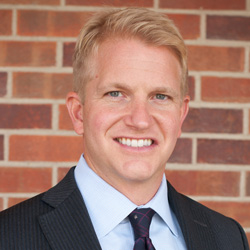Last Friday was the first day of my Business Organizations class. We began with two articles that have profoundly influenced my thinking about the world in general and the business world in particular. To inaugurate the new semester, I thought I’d take a moment and pay tribute to the insights in those articles (and solicit first day ideas from other business law profs!).
The first piece is F.A. Hayek’s The Use of Knowledge in Society. The article, written at a time when socialism was all the rage among the intelligentsia, pointed out the fundamental flaw in the socialist system. The problem Hayek highlighted was not the much-discussed motivational problem (i.e., why create wealth when the government is going to take it from you and give it to someone else?) but was instead an informational problem: how can economic planners allocate resources to their highest and best uses, and thereby maximize wealth, when the planners are not privy to the time- and space-specific information that determines what those uses are? In Hayek’s words:
The peculiar character of the problem of a rational economic order is determined precisely by the fact that the knowledge of the circumstances of which we must make use never exists in concentrated or integrated form but solely as the dispersed bits of incomplete and frequently contradictory knowledge which all the separate individuals possess. The economic problem of society is thus not merely a problem of how to allocate “givenâ€� resources — if “givenâ€� is taken to mean given to a single mind which deliberately solves the problem set by these “data.â€� It is rather a problem of how to secure the best use of resources known to any of the members of society, for ends whose relative importance only these individuals know. Or, to put it briefly, it is a problem of the utilization of knowledge which is not given to anyone in its totality.
The solution to this problem, Hayek argued, is the price mechanism, which he dubbed a “marvel.” Indeed it is. Market prices incorporate gobs of information and quickly process it to produce a single metric that tells consumers and producers precisely what they need to know: whether they should increase their production/consumption or cut back on it.
Suppose, for example, that you own an oil well and can select the level at which you produce oil. You pick up the morning newspaper and read four headlines: (1) “Unrest Worsens in the Middle East”; (2) “Huge Oil Reserve Discovered Off Coast of New Jersey”; (3) “New Senate Leadership Refuses to Budge on ANWR Drilling”; and (4) “GM Announces Plans to Switch Production from SUVs to Hybrids.” What should you do??? Well, headlines (1) and (3) would suggest that oil supplies are going to be tightening, so you should increase production; headlines (2) and (4) suggest just the opposite. What you really need to know is the expected magnitude of each of these effects (and all the others related to oil supply and demand). Fortunately for you, though, you need not spend all day scouring the newswires for oil-related information and estimating the significance of each datum. All you need to do is look at the price of oil, which tells you the best guess of millions of folks about whether or not we need more oil. This is utterly amazing. In Hayek’s words:
The most significant fact about this system is the economy of knowledge with which it operates, or how little the individual participants need to know in order to be able to take the right action. In abbreviated form, by a kind of symbol, only the most essential information is passed on and passed on only to those concerned. … The marvel is that in a case like that of a scarcity of one raw material, without an order being issued, without more than perhaps a handful of people knowing the cause, tens of thousands of people whose identity could not be ascertained by months of investigation, are made to use the material or its products more sparingly; that is, they move in the right direction. … I have deliberately used the word “marvelâ€� to shock the reader out of the complacency with which we often take the working of this mechanism for granted. I am convinced that if it were the result of deliberate human design, and if the people guided by the price changes understood that their decisions have significance far beyond their immediate aim, this mechanism would have been acclaimed as one of the greatest triumphs of the human mind.
The bottom line for Hayek, then, is that resources are most efficiently allocated not by centralized planners but by the “man on the spot” responding to the information inherent in market prices.
Enter Professor Coase. In The Nature of the Firm, he observed that this is absolutely not what we see in business organizations: “Outside the firm, price movements direct production, which is coordinated through a series of exchange transactions on the market. Within a firm, these market transactions are eliminated and in place of the complicated market structure with exchange transactions is substituted the entrepreneur/coordinator, who directs production.” Thus, “the distinguishing mark of the firm is the supersession of the price mechanism.” Business organizations are, in short, little islands of socialism in which Hayek’s beloved price mechanism is “superseded.”
So why do these “islands of conscious power” emerge? Because there are costs to using the market to allocate resources — most notably, transactions costs. Suppose, for example, that you want to start a catering business. You could minimize your labor costs by going down to the unemployment office every day and hiring, for the day, the laborers you’d need to fill that day’s orders. By taking that tack, you could pay the lowest wages possible (since your workers’ next best option would be unemployment), and you could ensure that you didn’t have any idle laborers (since you could hire only as many folks as you’d need to fill that day’s orders). But of course you wouldn’t do that because it would be extremely costly to engage in this process day after day. Instead, you’d hire some folks for the long term, accepting the possibility that you’ll probably have some periods of employee idleness. Business organizations emerge, then, as means of economizing on transactions costs. They will grow until the degree to which they reduce transactions costs is exceeded by the efficiency losses they create (e.g., the costs of idle resources, the agency costs that inevitably result when managers command resources they do not own).
This conception of the firm as a construction designed to minimize costs has profound implications for the law of business organizations. It also shows us how transactional lawyers can create wealth (as opposed to merely redistributing it, as lawyers often do). If the nature of the firm is as Coase describes, then the law should treat business organizations as no more than cost-minimizing nexuses of contracts between the suppliers of capital, managerial talent, and labor. This suggests (1) that the law should provide some “off-the-rack” nexuses of contracts that would appear to reflect the needs of large classes of business entities, and (2) that these various off-the-rack collections of contracts should be freely tailorable by business planners. Transactional lawyers can add value, then, by tailoring these off-the-rack contracts to meet their clients’ specific needs.
[Interestingly, Henry Manne has recently suggested that business planners might want to create Hayekian price mechanisms within the firm in order to enhance the quality of information available to managers. His fascinating short paper Hayek, Virtual Markets, and the Dog that Did Not Bark suggests how planners might choose to authorize insider trading (or internal prediction markets) in order to provide managers with the information-revealing benefit of prices.]
That’s the nutshell version of the first day of my Bus Orgs class. I’d be most interested in hearing what other law profs do to introduce this subject.




